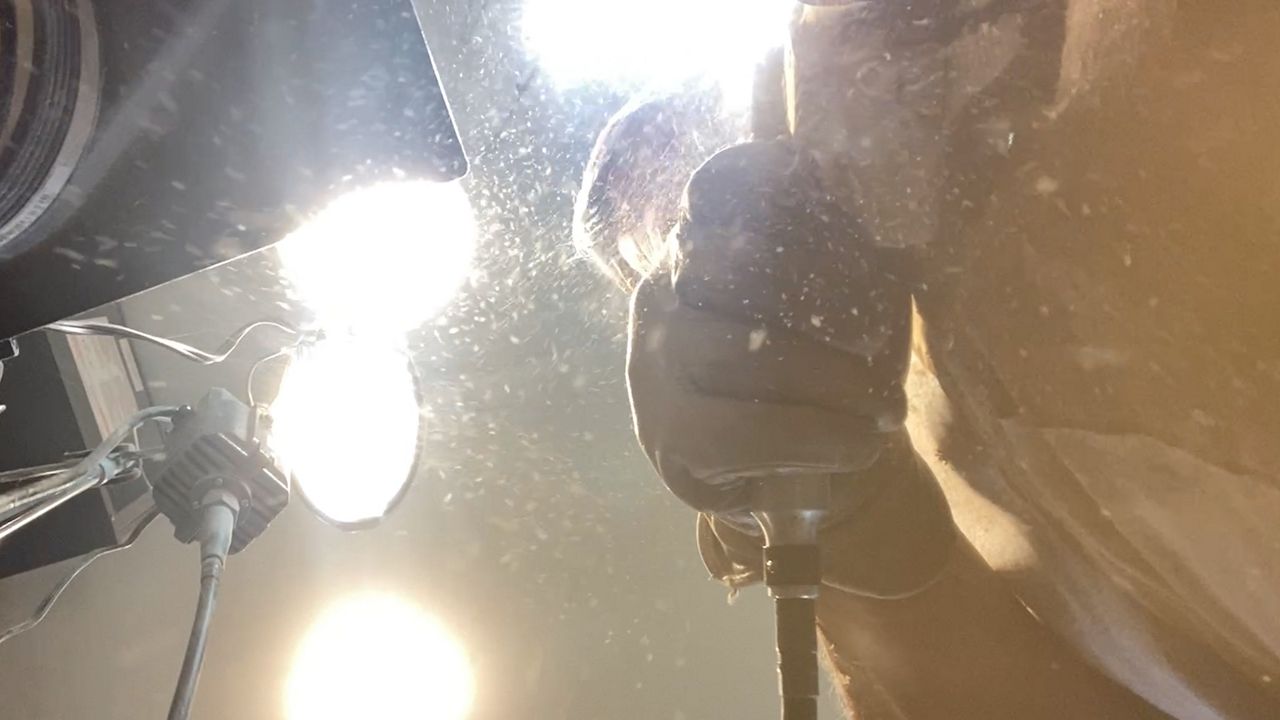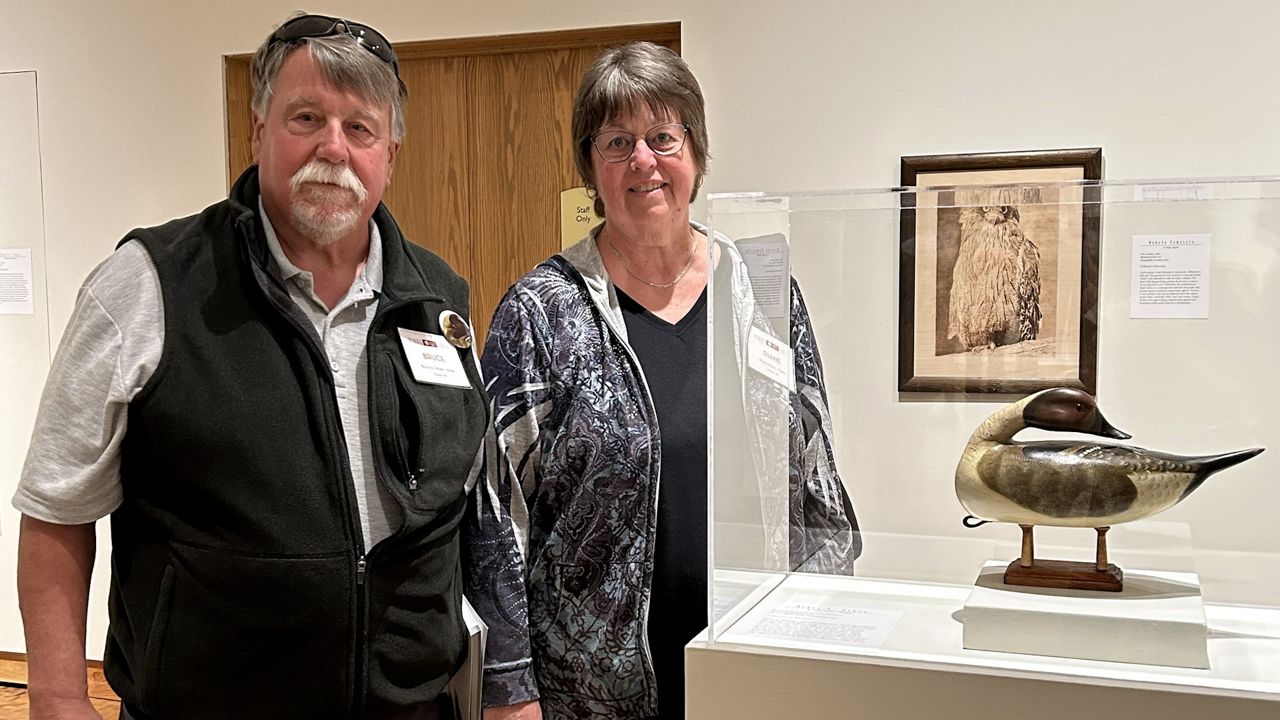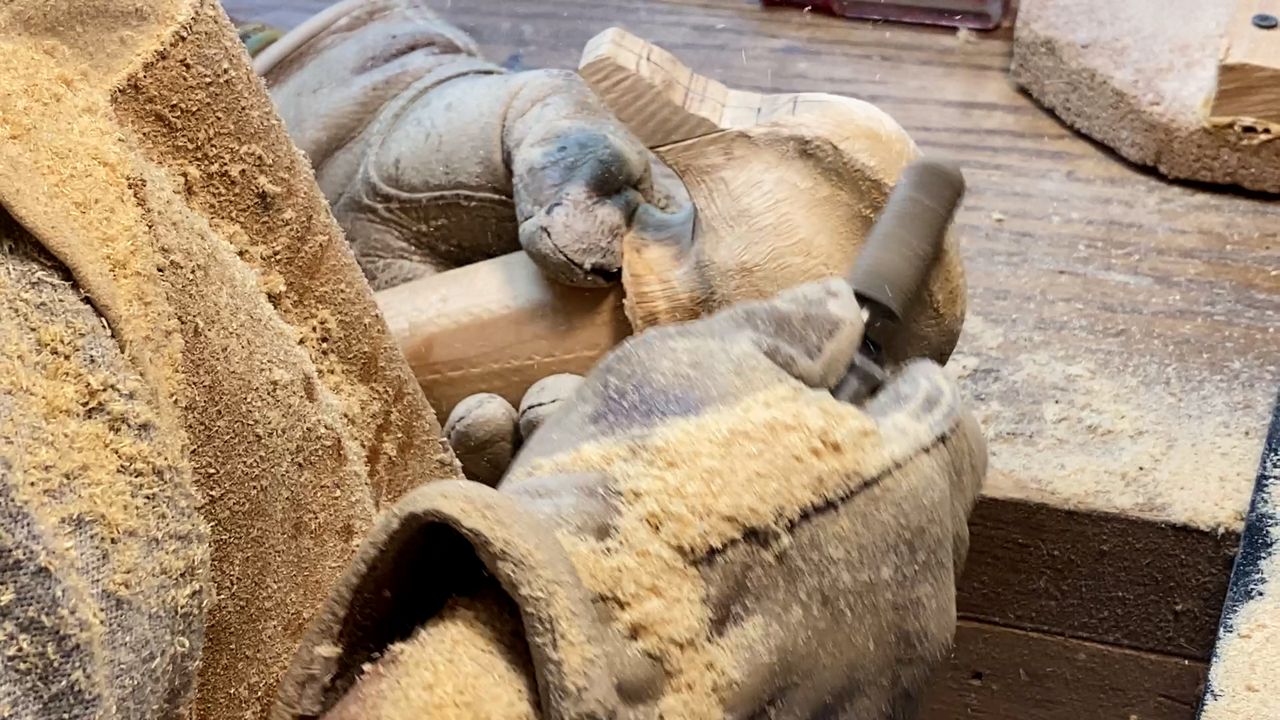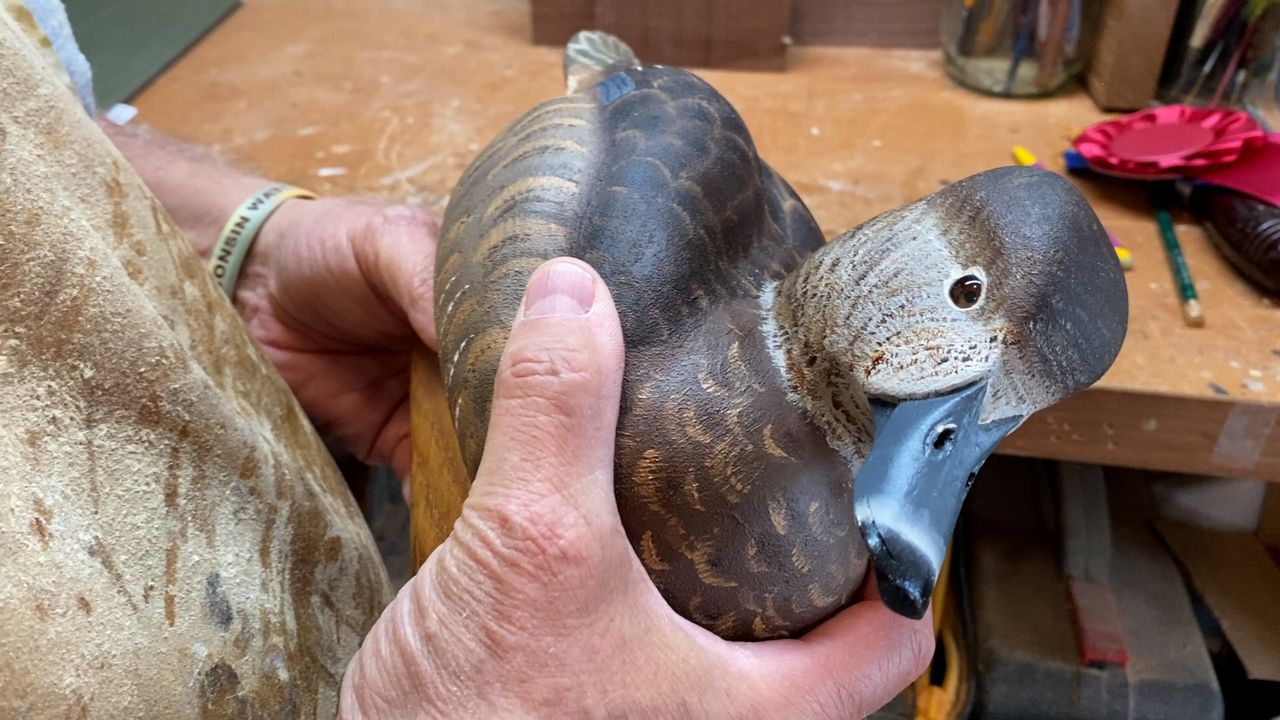PULASKI, Wis. — If the lights are on in Bruce Urben’s wood shop, there’s a good chance he’s creating a wooden decoy.
Over the years, Urben has carved hundreds of decoys; he said he became interested in the craft for a simple reason.
“I’m a waterfowler first. The real interest I had was carving my decoys to hunt over them compared to using all of the plastic stuff,” said Urben. “I didn’t have a whole lot of money to spend on decoys. So start making them yourself, and they’ll last a long time.”
Decoys are man-made objects that look like animals or other nature objects — in this case, Urben creates duck decoys. They are used in waterfowl hunting to attract real ducks.
He said prefers white cedar for the body and basswood for the heads. He dries the wood in his garage until the moisture content is just right.
“I find it calming,” explained Urben. “If I come out here and I’m out here for an hour, my wife says, ‘Why didn’t you come in for lunch?”’
Over the years, Urben carved many decoys by knife but said it can be hard on the hands.
Now, he mainly uses power tools. The sawdust flew through the air as he transformed the blocks of wood.

“Most carvers use a Foredom. It’s a Dremel tool on steroids. It’s the same thing your dentist uses, only it’s a little larger,” said Urben.
Carving is an important part of the process, but Urben said the best decoys have a great paint job.
“You paint from the back of the bird to the front of the bird,” explained Urben. “The reason you do that is because the feathers lay over the top of each other.”
It’s good advice. While useful on the water, Urben’s decoys are actual pieces of art. He’s won several awards and has an entry into the “Birds in Art” exhibit at the Leigh Yawkey Woodson Art Museum in Wausau.
“As I told my wife, that decoy not only fools ducks, it fools judges too,” said Urben.

He’s modest about his success, but collectors seek out Urben to recreate the work of historically significant carvings. Knowing many of his carvings are more likely sitting on a shelf instead of floating on the water gives Urben mixed emotions.
“I love to see it being used when it’s put in the water and shot over. Many times, a lot of the birds go out of here, and I don’t think many of them make the water at all,” said Urben.
But as for his crew, Urben’s family still hunts over his decoys. They bring in the ducks, but the decoys have benefits on slow days as well.

“When the ducks aren’t flying, when you’re in the duck blind, and you have those bluebird days, you’re sitting there waiting,” said Urben. “Would you rather be looking over some decoys you carved or a bunch of plastic ones?”
Urben also writes a “Decoy Corner” blog for the Wisconsin Waterfowl Association

“I enjoy it. And I think every carver that I know does,” said Urben.
When asked about his favorite carving, Urben said he is still chasing perfection.
“I haven’t got there yet,” said Urben.
That should mean he’ll spend more hours in his shop, where he shapes wooden blocks into works of art that fool ducks and judges alike.



